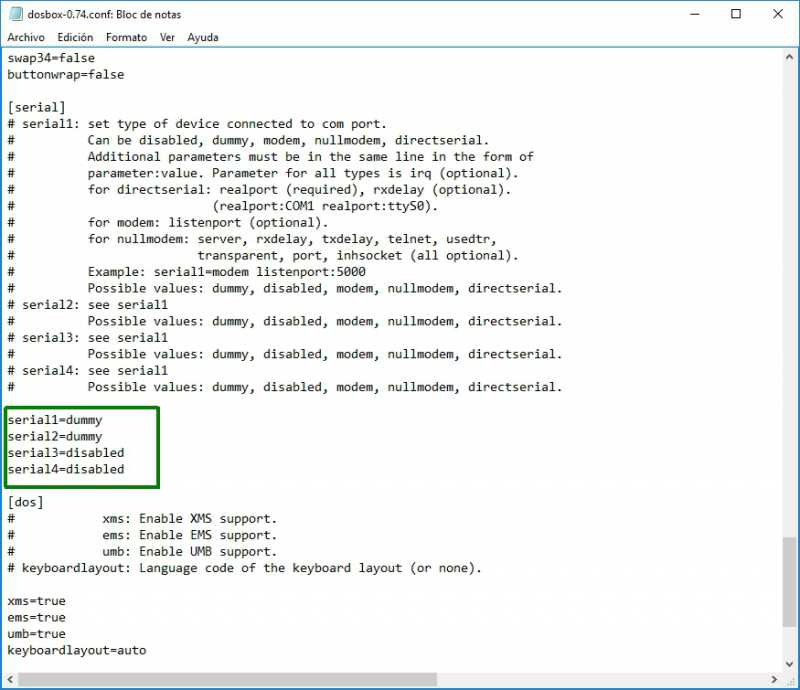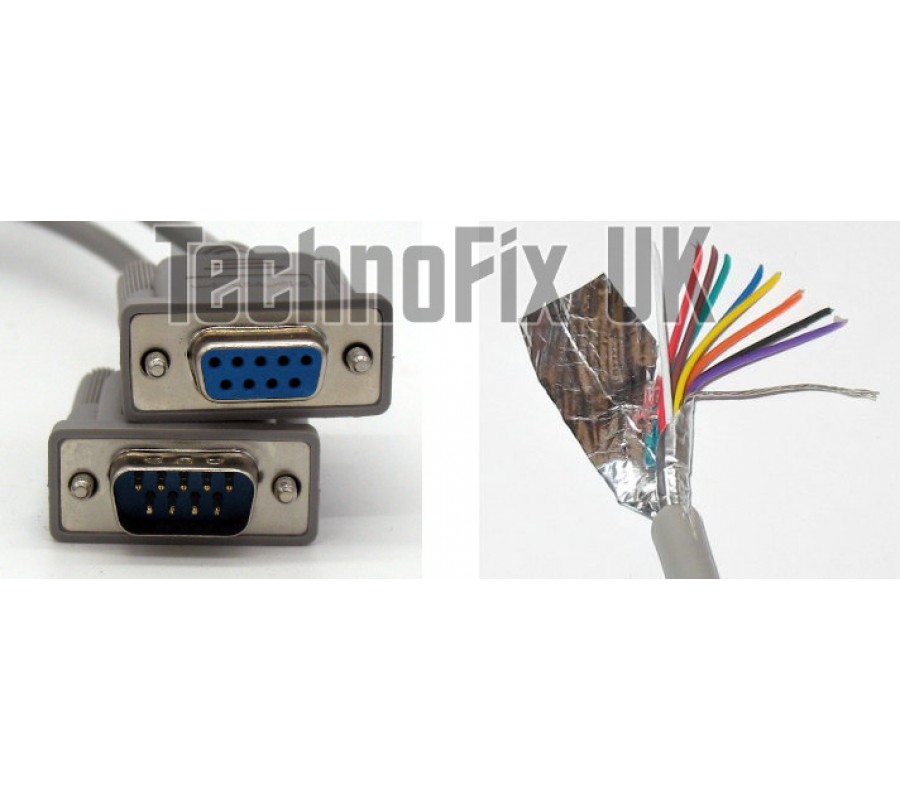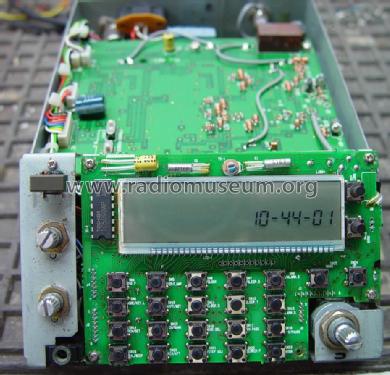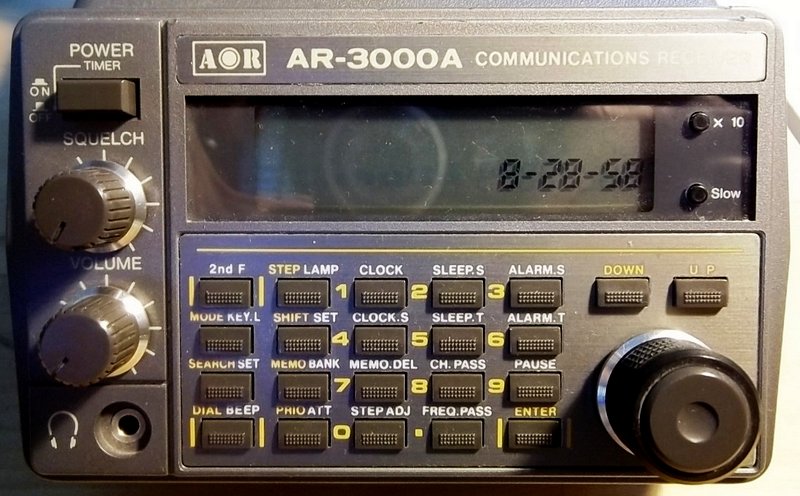- Aor Ar3000a Control Software Download
- Aor Ar3000a Control Software Developer
- Aor 5000 Receiver
- Aor Ar3000a Control Software Downloads
- Aor 8200 Scanner
- Aor Radios For Sale
- Computer Control Software. Over recent years the number of receivers/scanners which can be connected to a Computer for remote control in one way or another has grown considerably, similarly the number of software packages now available has also increased. Supports the AR3000/AR3000A AOR DataMaster.
- Aor Ar3000a Control Software Posted on 5/23/2018 by admin Die Steuersoftware AR-3000A Remote Control Center Version 1.6 ist Freeware und wurde 2002 entwickelt von Willem Spaans. Download AR-3000A Remote Control.
- About ControlSoft AR5000 The resource is currently listed in dxzone.com in a single category. The main category is Radio control software that is about radio control software,for swl and ham radio operators programs. This link is listed in our web site directory since Monday Jun 20 2011, and till today 'ControlSoft AR5000' has been followed for a total of 979 times.
Handheld Amateur VHF/UHF Scanner / receiver
Police Scanner / Communication Receiver
This radio is a wide range AM and FM mode receiver. It is a discontinued model. There are not a lot of these radios out there, and very little information is available. The manufacturer offers no information on their web site for this model. It is a capable model that covers a wide range of frequencies.
- 2HowTo: Basic Operation
- 3User Manual from OCR
Aor Ar3000a Control Software Posted on 5/23/2018 by admin Die Steuersoftware AR-3000A Remote Control Center Version 1.6 ist Freeware und wurde 2002 entwickelt von Willem Spaans.
Specifications

Frequency range RX
- 27-54 / 108-174 / 406-512 / 830-950 MHz (USA)
Aor Ar3000a Control Software Download
Tuning steps
- 5 / 10 / 12.5 / 25 kHz
Modulations
- AM / FM
Sensitivity
- AM: 1 µV (10 dB S/N @ 118-136 & 220-380 MHz)
- FM: 0.5 µV (12 dB SINAD @ VHF)
Receiver system
- Double conversion
IF-frequencies
- 1st: 21.4/177 MHz
- 2nd: 455 kHz
Image rejection
- 30 dB @ 120 MHz
- 11 dB @ 935 MHz
Other
- Power requirements 4.8~6V DC (4×AA/R6)
- Memory of 100 channels in banks A - E
HowTo: Basic Operation
When turned on, scanner goes immediately to scan.
- To stop scanning, press the MANUAL button (3rd row 1st button)
- To go directly to a channel press the letter of the bank (bottom row A - E) and type the desired channel number (a number between 1 and 20). Begin single digit channels with preceding zero.
- You can step forward though channels by pressing the MANUAL button.
Program a frequency into scanner
When turned on, scanner goes immediately to scan. Press the MANUAL button to stop scanning.
- Press MANUAL
- Navigate to the memory bank and channel number to be programmed
- Enter the frequency and select AM/FM or verify
- Press the ENT button (4th row last button) to commit frequency to that memory bank channel
Clear all channels from memory
This would be akin to a reset.
Connect headphone or ext speaker
Connection on top is for a sub-mini 2.5mm 3/32' TS phono plug. The jack is labeled simply 'EAR.' An adapter to go from the tiny 3/32' plug to a more modern 1/8' or 1.4' plug will make this useful. See a discussion on phono plug sizes here: Phono Plug Sizes. This scanner uses a mono TS plug.
User Manual from OCR
Manual: Quick Start
NOTE: This is extracted from the UK version of the owner manual. The UK version advises scanning cellular range which is neither legal nor useful in the United States. The U.S. version will not allow cellular phone frequency entry.
For those, and that is the vast majority of us, who want to listen to something immediately and read the Instruction Manual later, please carry out the following steps:
- Fit the thinner of the two aerials (push on and turn).
- Turn squelch (SQ) control fully counterclockwise.
- Turn volume (VOL) control clockwise to a comfortable listening level.
- Turn squelch clockwise until the background noise stops.
- Press the following keypad buttons in order - Search Progm If the letters FM show in the middle right hand edge of the display, move to the next step, but if AM shows press AMFM until FM shows.
Next step - press 9, 3, 6, ENT, PRY LUUL, 9, 4, 0, ENT, and then press LOCKOUT/INC until 12.5 shows at the top ofthe display slightly right of centre, ENT, SEARCH (NOT search progm). The AR900UK should, if the battery is notflat, start searching part of the Cellular telephone band and you should hear signals. If the search stops on a signal whichis unintelligible, pressing SEARCH (not search progm) will restart the search. If the AR900UK does not seem to beworking properly, the battery may be flat - charging instructions follow a bit further on, but be absolutely sure youhave carried out the above instructions to the letter before giving up in despair.
Manual: INTRODUCTION
note: OCR from original owner manual UK version. May contain OCR related character errors.
The AR-900UK is manufactured by A.O.R. Limited'of Japan whose products, going back a long time, havegained a world-wide reputation for both performance andreliability second to none. It has been carefully engineeredand manufactured to a rigid specification capable of givingsatisfactory and dependable Operation for many years.
After unpacking, it is as well to keep the packingmaterial in case it should ever be needed for remoteoperation, maintenance or service, and check that it issupplied with the following accessories:
1 - AC Adaptor/Charger. Input 24oVAC 5oHz 5W. Output 6VDC ZOOmA.
It will be necessary to attach a mains plug to this unit suitable for fitting into a standard domestic power socket.
2 - Flexible helical whip aerials, one slightly thicker than the other.
1 - Instruction Manual.
Before using the charger for the first time werecommend that the battery be fully discharged by switchingon the dial light. When this goes out or the “bat low”warning appears on the display, switch it off, plug one endof the charger into the mains, the other end into theAR9ooUK charger socket marked “CHG DC6V”, andcharge for 8-10 hours. The reason for this procedure is that
Nickel Cadmium (NiCad) batteries may acquire what hasbeen described as a “memory” which subsequently gives riseto difficulty in charging them fully. This fulldischarge/charge cycle at the outset minimises this problemand ensures that optimum battery usage is achieved. Notethat during the initial discharge you can use the ARQOOUICbut it will, in all probability soon start to die on you as thebattery gets flatter and flatter. The same thing applies to theinitial charge - it will take several minutes to start coming tolife again, but after that there is no reason why you should notuse it, but I would be inclined to leave the dial light 017'. Oneother thing to remember - if you use the AR9ooUK duringthe charging cycle, then the charging time should beincreased to compensate. As overcharging: is not undulyharmful it is not necessary to set the alarm for 3 am. toswitch the charger off - up to 16 hours once in a while willnot hurt. Repeating this rapid discharge/full charge cyclethree or four times is not a bad idea and results in theNiCads reaching their full capacity of 7 to 9 hours normalusage. Subsequently, an overnight charge or a charge whileyou are at work when the low battery (Bat-Low) warningappears on the display is all that is necessary. As for thetotal life of the NiCads - hard to say o depends not only onusage but many other factors, but I would be a bitdisappointed if they only lasted a year and delighted if theylasted four. Fortunately they do not cost the earth toreplace.
Manual: Operating modes
note: OCR from original owner manual UK version. May contain OCR related character errors.
The AR900UK can be used in three different ways.In the MANUAL mode, any frequency within the tuningrange may be entered into any of the 100 memory channels(Ao1 to E20) and,recalled by entering the appropriatechannel number. Additionally, repeated pressing ofMANUAL goes through the memories sequentially, tuningto the different frequencies in them. The second mode of operation is the SCAN facility whereby up to 100frequencies are manually put in the memories and thenrapidly scanned. Should there be a signal present, theAR9ooUK will stop scanning to permit the signal to beheard. The 100 memories are in 5 (A,B,C,D,and E) banksof 20 and any bank or combination of banks may bescanned. One popular method of use is to have local airfieldand airways frequencies in one bank, Radio Amateurs inanother, Private Mobile Radio in a third, cellular car'phones in a fourth and so on, scanning the bank. or banksof current interest. Should interest in one or morefrequencies temporarily wane, that frequency or frequenciesmay be temporarily locked out by pressing theLOCKOUT/INC key. Pressing a second time brings thefrequency back. into the scan. The SCAN operationpresupposes that the user knows firstly what frequencies toput in the memories and secondly whether the transmissionis AM or FM. There are several books which list variousfrequencies and your Dealer will be happy to advise. As towhether a transmission is AM or FM, a good general rule isthat all airband, civil and military are AM, anything else isFM, but if in doubt, trying both will determine which iscorrect. For the beginner who has little or no idea of whatfrequencies are in general use in his area, the third mode ofoperation comes into its own. This is the search mode, andin this mode the AR9ooUK will scan between twoprogrammable limits, stopping wherever there is a signal.Anexample of this mode of operation was given at the start ofthis manual. A good starting point is to consult the “BandPlan” listed further on and decide what you would like tolisten to. Take a small portion of the band and search thatportion noting any interesting frequencies or putting themdirectly into a memory bank by use of the HOLD facilitydescribed later. Having exhausted the possibilities of thatparticular portion, repeat over the next portion, and so on,not attempting to search more than a'1MHz portion at atime, otherwise there is a strong possibility that sometransmissions will be missed. After 20 frequencies have beenentered into a memory bank, it will, of course, be necessaryto start a fresh bank.
Manual: CONTROLS
note: OCR from original owner manual UK version. May contain OCR related character errors.
Firstly a description of the various switches and keys.
TOP PANEL.
- VOLUME Controls the volume and is also the Oil/off
switch.
- SQUELCH Mutes the background noise, which,
particularly in the FM mode, tends to be mostobjectionable. Note that in order for theAR9ooUK to scan or search, it is essential touse the squelch control. The best position forthis control is when the noise is just, but only just, . muted, otherwise sensitivity suffersslightly.
- KEY This disables the keyboard to prevent
LOCK accidental errors.
- LAMP This illuminates the diSplay, but also rapidly
discharges the battery.
FRONT PANEL
- SEARCH In the search mode, it initiates the search.
- SEARCH In the search mode it is used to programme
- PROGM the upper and lower limits of the search.
- SCAN In the scan mode it initiates the scan.
- PRY This is a dual function key. used in the search
- LL/UL mode to set lower (LL) or upper (UL) limits
to the search. The other function is, in the.scan mode, to make memory Ao1 :1 prioritychannel. Every 7 seconds or so Ao1 isexamined and if a signal is present that signaltakes priority over all others.
- MANUAL The key which enables frequencies to be
entered and permits manual examination ofthe memories.
- LOCKOUT This is a dual function key which stops the reception of unwanted signals in the scan or manual.,modes. It also selects the frequency steps in the search mode.
- DELAY This is a dual function key. The delay function
- HOLD operates in both the scan and search mode to
hold the frequency of a received signal foraboutWS seconds after the transmission hasended; The hold facility operates in the searchmode only and holds the signal frequency aslong as desired. This gives the user a chance to make a note of the frequency or put it directlyinto one of the memories simply by pressingENT followed by the memory location (e.g.
Co9). Searching resumes on pressingSEARCH.
W This selects AM or FM during initialprogramming (generally speaking everythingoutside the Air Band is FM).
THE In the search mode, it is possible to obtain
RED 4 manual operation, stepping up or down by
and 7 repeatedly pressing one of these keys, oraltering direction of the search, resuming bypressing the search key.
CLEAR If an error is made when programming afrequency, the clear key may be used to eraseit.
0 - 9 Frequency entry keys.
ENT Enters a frequency into the memory frommanual, scan, or search programme modes.
A - E Selects from one to five memory banks.
DISPLAY In addition to the frequency, the display showsthe memory bank or banks in use (A - E), thesearch increment (5,10,12.5 or ZSkHz), mode(manual MAN, scan SCAN, search SRCH orsearch programme PROG), delay (DLY) 01'hold (HLD), priority (PRY),Direct access(DIR-ACC), AM or FM mode, lockout of ascan channel (L/O), low battery indicator(Bat-low), memory bank and channel number.

OPERATION.
SEARCH To look for active frequencies within a chosen
MODE. range press SEARCH PROGM, one of theletters A - E, AMFM to select mode (UsuallyFM outside the Airband). the lower limitfrequency may now be entered (the decimalpoint may be ignored) followed by pressing theENT key. To enter the upper limit, press thePRY LL/UL key followed by the frequency andthen ENT. The search increment may now beselected by pressing LOCKOUT/IN C followedby ENT then press SEARCH. The AR900 willstart searching the selected frequency range.Note that recommended search increments are incorporated in the Band Plan and that it iswise to limit the search to about IMHz to avoidmissing anything. Also Note the use of the holdfacility - an active frequency may be held andentered into a memory simply by pressing ENTand then a memory channel (e.g. DIZ) pressingSEARCH to restart. 77w only problem is that itwill replace anything that is already in D12which is then lost, so it is essential to keep trackof what memories are used. Also Note the useof the red 4 and 7 keys described above. Theonly other point to remember is always to enterthe upper and lower limit frequencies by pressing
O . ENT even if they are already displayed.SCAN Assuming that you have found a fewMODE. frequencies or know frequencies which youwould like to scan, press MANUAL; selectbank and channel by ENT, A,B,C,D, or E,(note that DIR ACC appears on the displaybecause this is how channels are directlyaccessed in the manual mode) followed by anumber 01 - 20. The frequency displayed isthat which is already in the memory, so besure it is no longer needed because it will belost when a new frequency is entered. If it isneeded, simply re-enter a different channelnumber. If the AR9OOUK is new, thefrequencies entered are merely those used forour pre - sales check and are of nosignificance. Enter the desired frequency bythe numeric keys (the decimal point and final 0or 00 may be ignored), select AM or FM(Airband AM) and press ENT. Repeat thisprOcess for other channels. Scanning is started(or restarted) by pressing SCAN. Whilstscanning, banks may be temporarily added ordeleted by one or more of the letter keys AB. These act as an on/off switch - press onceto switch from on to off, or vice versa, andagain-to reverse the process. Channels not ofcurrent interest may be locked out by the useof LOCKOUT/INC, and the lockout removedby accessing the channel in the manual modeand again pressing the LOCKOUT/INC key.The DELAY HOLD key, if pressed willactivate the delay of about 6 seconds, a secondpress removing it. For correct operation of SCAN and SEARCH modes, Wshoulialmaysbesct.The scan may be stopped by pressingMANUAL, and stepping through the memorychannels achieved by repeatedly pressingMANUAL. Ao1 is the priority channel and isswitched in or out by the PRY LL/UL key.Remember that the AR9ooUK must besquelched before it will scan but that everysynthesized receiver has certain “birdies”which cannot be silenced by the squelchcontrol, and it may be necessary to restart thescan by pressing the SCAN key.
MANUAL Virtually every aspect of this mode has already
MODE. been covered, so nothing can be added. Thiscompletes the operating of the AR9ooUK, butthe following one or two notes may be ofinterest.
Manual: AERIALS
note: OCR from original owner manual UK version. May contain OCR related character errors.
Aor Ar3000a Control Software Developer

There are two aerials supplied, the thinner moresuitable for frequencies above 4ooMHz and the thicker forbelow this. If you are scanning a mixture of frequencies, it isa question of trying both aerials to see which performs best.Slightly greater range will result by using an extending whipaerial, trying it at different lengths, but with the snag that itis more prone to damage both itself and anyone close-by.Although connection of an outside aerial system such as adiscone or ground plane on the house roof will oftenproduce better signal strengths, such aerials will generallyproduce bloeking or overloading effects on the AR9ooUK,which is designed to operate with the aerials supplied. YourDealer will be able to advise and supply suitable aerials, orreading any of the books on scanners (our own littlepamphlet makes sound sense) will aid your understanding ofthe factors involved. Some form of roof aerial is to berecommended when using the AR9ooUK in the car - if youhave a favourite band, an aerial for that band is a good ideaand again your Dealer can advise.
List of AOR Scanners and Radios
- Aor Ar1000xlt Wide Range Monitor Receiver Scanner
- Nice Ar 800 Wide Range Scanner And Receiver
- Aor Ar7000 Wideband Receiver rare Near
- New ar-mini Wide Band Scanner
- New Battery Door cover Part 1ea For Ar8200 Mk3 ar8200mk3 mkiii
- Aor Ar-3000a Radio
- Aor Ar3000a Am Fm Usb Lsb Cw Wfm Nfm
- Aor Ar-950 Vhf uhf Receiver scanner 950 Mhz
- Aor Ar-mini Wide Band Handy Scanner New N.r.
- Aor Ar Mini Wide Band Receiver- Unblocked
- Vi-8200 Voice Inverter Slot Card Ar8200 Ar8600
- Aor Ar-8000 Wide Band Receiver With Action Hunter Antenna And Original Box
- Aor Ar7030 Communications Receiver Shortwave Receiver
- Aor Ar3000a Parts Give Your s A Face Lift All New Parts
- Aor-3000a Communicatios Receiver
- Aor Ar3000a Hi-freq mult-iband Monitor.receiver Manual
- Ar8000 Handheld Scanner
- New Dc Power Cable For Ar2002 Ar3000 Ar3000a Others
- Ar8200 Mark Iii B Scanner With Accessories
- New Aor-ar8600mk2 Communications Receiver
- Aor Ar1000xlt Scanner Monitor New
- Cu-8232 Ar 8000 Control Unit Pc Rs232c Scanner Ham
- New ar-8200mk3 ar8200mk3 Wide Band Scanner
- Ar8200mk3 Wide Range Receiver Scanner
- Aor Ar 8000 Receiver -computer Control Software-scancat
- Wl500 Window Loop Antenna 3.5 30 Mhz
- Aor Ar 3000a Receiver Scanner
- Aor Ar 1000xlt Wide Range Portable Scanner No Lockouts
- Aor Ar-8000 Wideband Receiver Hf Vhf Uhf Am Fm Usb Lsb
- Aor Ar-900 Vhf uhf Am fm Handheld Scanner Receiver Radio
- New Sr2000a Fft Frequency Monitor Unblocked
- Vi-8200 Voice Inverter Ar8200 Nos
- Hand Held Programmable Scanner
- Rf Counter Reaction Tune Icom Optoelectronics Tscm
- Sa7000 Super Wideband Coverage Receive Antenna
- Aor Ar-5000 Super Wideband Receiver hf vhf uhv Multimod
- Sdu 5000 Spectrum Display Ham Radio Ar 3000 Scope
- Aor-ar8200 Wide Range Scanner
- Aor 1000 Wide Range Portable Scanner
- Scanner Mk3 Power Supply
- Aor Ar 8000 Wide Range Receiver
- Ar8200mk3b Communications Receiver Bought July 29 2011
- Ar8200 Mk3 Wide Range Receiver Unblocked
- New 800 Mhz Mini-snoop Scanner Antenna Fits Uniden Aor+
- Ar8600 Receiver Scanner Condition
- Aor 7030 Shortwave Radio Receiver
- Aor 1000xlt 1000 Ch Scanner With Case .5 To 1300 Mhz
- Aor Ar2800 Wide Band Scanner Receiver
- Wide Range Monitor Ar-2500 Mobile Scanner Radio
- Hand Held Receiver Ar1000xlt
- Aor Ar 1000xlt Scanner- Working
- Aor Ar-2500 Turbo Scanning Monitor Receiver 5 To 1300mh
- Aor Ar7030 Shortwave Radio Receiver
- Aor 8200 Mkii Wideband Receiver Scanner W em-8200
- Aor8000 Computer Interface Computer Software - Used
- Aor Ar-2515 Wideband Receiver
- Ar8200 Mkiii Wide Range Reciever - Unblocked
From The RadioReference Wiki

Aor 5000 Receiver
This page lists links, related pages and software support for the AOR AR3000-series desktop receiver. The technical specifications for the AR3000A canbe viewed here (copied from Universal Radio).
General Specifications
Aor Ar3000a Control Software Downloads
- 100kHz-2036Mhz range
- AM, NFM, WFM, USB, LSB, CW (WEFAX w/3000A)
- 400 channels in 4 banks
- Scan rate 20cps (30-50 w/3000A)
- Selectable steps from 50Hz-100kHz
- Signal meter
- Computer control
- 4 search banks
- Clock/timer (alarm w/3000A)
- 1 priority channel (4 w/3000A)
- Attenuator
- Automatic tape recording
Filters and other mods
Reviews and User Opinions
Related Pages
Supporting Software
Aor 8200 Scanner
NOTE: Due to a firmware change, software that supports the AR3000 may not support other versions. Be sure to check before purchasing or downloading.
Aor Radios For Sale
- See the following articles for additional support;
Message Boards / Forums
AR3000 Receivers for Sale
Back to AOR Radios